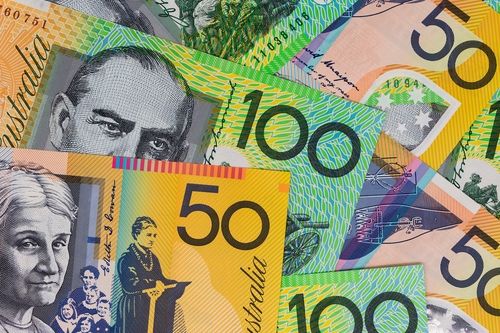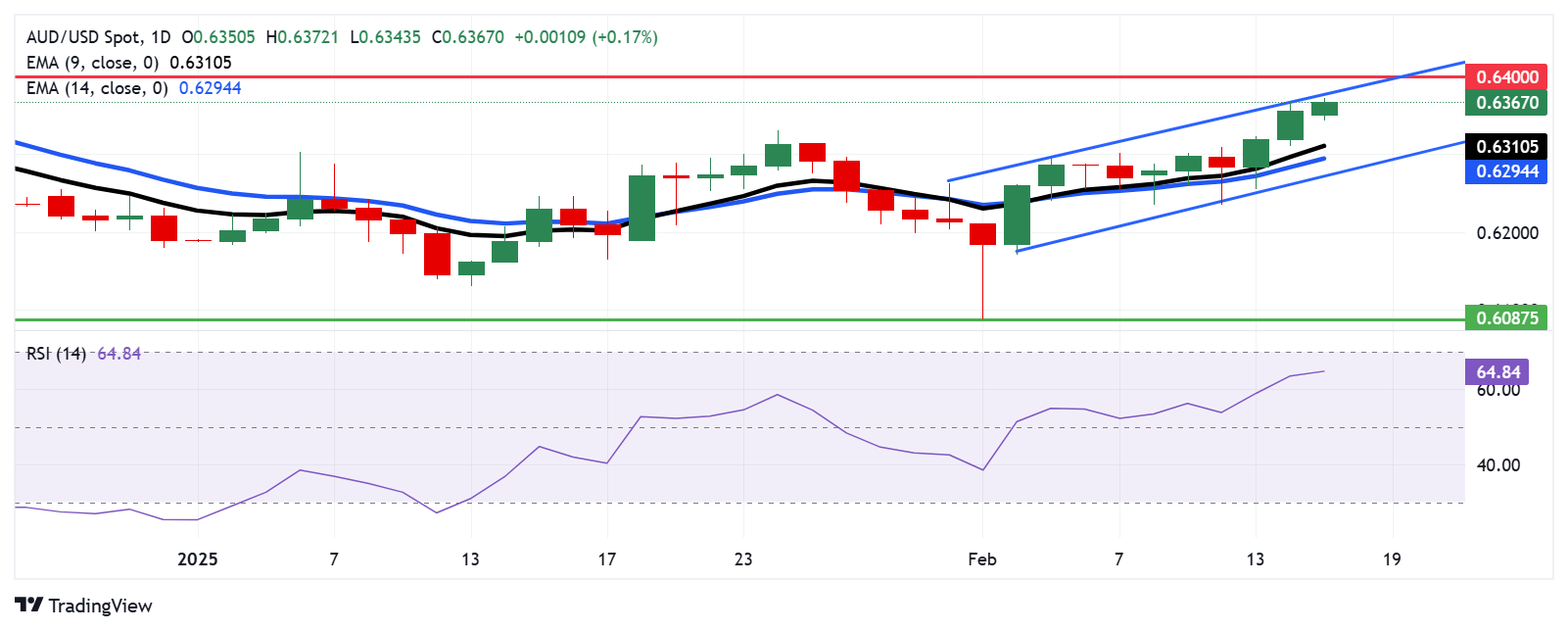
The Australian Dollar strengthens amid risk-on sentiment following the postponement of Trump’s reciprocal tariffs.
The AUD could encounter pressure as the RBA is widely expected to announce a rate cut on Tuesday.
Weaker US Retail Sales data has intensified speculation that the Fed may lower interest rates later this year.
The Australian Dollar (AUD) continues its upward momentum against the US Dollar (USD) for the third straight day on Monday, supported by US President Donald Trump's decision to delay the implementation of reciprocal tariffs.
The AUD/USD pair also appreciates as the US Dollar (USD) weakens as disappointing US retail sales report has reignited speculation that the Federal Reserve (Fed) may cut interest rates later this year, despite ongoing inflation concerns.
The upside of the AUD/USD pair could be restrained amid rising speculation of the Reserve Bank of Australia (RBA) rate cut on Tuesday. The RBA is expected to cut its Official Cash Rate (OCR) by 25 basis points (bps) to 4.10%, the first-rate reduction in four years.
Australian Dollar advances as US Dollar loses ground weaker Treasury yields
The US Dollar Index (DXY), which tracks the US Dollar's performance against six major currencies, remains under pressure for the third consecutive session due to weaker US Treasury yields. As of writing, the DXY hovers around 106.70, while yields on 2-year and 10-year US Treasury bonds stand at 4.26% and 4.47%, respectively.
Data from the US Census Bureau on Friday showed that US Retail Sales fell by 0.9% in January, following a revised 0.7% increase in December (previously reported as 0.4%). This decline was sharper than the market’s expectation of a 0.1% drop.
Core PPI inflation in the United States (US) rose to 3.6% YoY in January, exceeding the expected 3.3% but slightly below the revised 3.7% (previously reported as 3.5%). This has reinforced expectations that the Federal Reserve (Fed) will delay rate cuts until the second half of the year.
US Consumer Price Index (CPI) rose 3.0% year-over-year in January, exceeding expectations of 2.9%. The core CPI, which excludes food and energy, increased to 3.3% from 3.2%, surpassing the forecast of 3.1%. On a monthly basis, headline inflation jumped to 0.5% in January from 0.4% in December, while core CPI rose to 0.4% from 0.2% over the same period.
In his semi-annual report to Congress, Fed’s Powell said the Fed officials “do not need to be in a hurry" to cut interest rates due to strength in the job market and solid economic growth. He added that US President Donald Trump's tariff policies could put more upward pressure on prices, making it harder for the central bank to lower rates.
A Reuters poll of economists now suggests the Federal Reserve will delay cutting interest rates until next quarter amid rising inflation concerns. Many who had previously expected a March rate cut have revised their forecasts. The majority of economists surveyed between February 4-10 anticipate at least one rate cut by June, though opinions on the exact timing remain divided.
Federal Reserve Bank of Cleveland President Beth Hammack stated on Tuesday that keeping interest rates steady for an extended period will likely be appropriate. Hammack emphasized that a patient approach will allow the Fed to assess economic conditions and noted that the central bank is well-positioned to respond to any shifts in the economy, according to Reuters.
The dovish sentiment regarding the RBA rate cut remains intact following fresh inflation outlook data. Consumer inflation expectations climbed to 4.6% in February from 4.0% in January, reaching their highest level since April 2024.
Australian Dollar rises toward ascending channel’s upper boundary near 0.6400
The AUD/USD pair hovers near 0.6360 on Monday, moving upwards within the ascending channel pattern. This suggests that market bias is bullish. Additionally, the 14-day Relative Strength Index (RSI) maintains its position above the 50 mark, reinforcing a bullish bias.
On the upside, the AUD/USD pair may test the upper boundary of the ascending channel at 0.6380 level, followed by the psychological level of 0.6400.
The AUD/USD pair could find its primary support at the nine-day EMA of 0.6310 level, followed by the 14-day EMA of 0.6294. A break below these levels could weaken the short-term price momentum, potentially pushing the pair toward the ascending channel’s lower boundary at the 0.6270 level.
AUD/USD: Daily Chart
Australian Dollar PRICE Today
The table below shows the percentage change of Australian Dollar (AUD) against listed major currencies today. Australian Dollar was the strongest against the US Dollar.
| USD | EUR | GBP | JPY | CAD | AUD | NZD | CHF | |
|---|---|---|---|---|---|---|---|---|
| USD | -0.10% | -0.07% | -0.32% | -0.10% | -0.24% | -0.48% | -0.02% | |
| EUR | 0.10% | 0.18% | -0.24% | 0.09% | -0.06% | -0.28% | 0.18% | |
| GBP | 0.07% | -0.18% | -0.33% | -0.09% | -0.19% | -0.47% | -0.00% | |
| JPY | 0.32% | 0.24% | 0.33% | 0.20% | 0.09% | 0.03% | 0.25% | |
| CAD | 0.10% | -0.09% | 0.09% | -0.20% | -0.12% | -0.37% | 0.08% | |
| AUD | 0.24% | 0.06% | 0.19% | -0.09% | 0.12% | -0.23% | 0.24% | |
| NZD | 0.48% | 0.28% | 0.47% | -0.03% | 0.37% | 0.23% | 0.46% | |
| CHF | 0.02% | -0.18% | 0.00% | -0.25% | -0.08% | -0.24% | -0.46% |
The heat map shows percentage changes of major currencies against each other. The base currency is picked from the left column, while the quote currency is picked from the top row. For example, if you pick the Australian Dollar from the left column and move along the horizontal line to the US Dollar, the percentage change displayed in the box will represent AUD (base)/USD (quote).
* The content presented above, whether from a third party or not, is considered as general advice only. This article should not be construed as containing investment advice, investment recommendations, an offer of or solicitation for any transactions in financial instruments.



